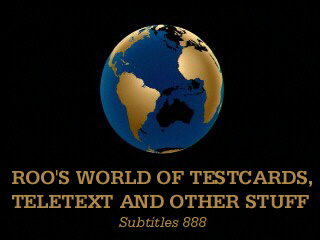

 | Now remember. It was 1982. There were THREE
television channels here in the UK, video recorders were something that would never
catch on around here, and tv only started at 12 in the afternoon. Sometimes. This had a profound effect on me. I used to gaze in awe at the little girl playing noughts and crosses with the clown and wonder if she would ever move. As the months passed, other equally profound thoughts entered my head, like,"Who is noughts and who's crosses?" I thought that the two were television. I was disappointed to learn that the clown wasn't real, and the girl is called Carol Hersee. And that the picture was first shown in 1969. Which at first led me to believe that this was the longest game of noughts and crosses ever, and whoever's turn it was, had the best poker face in the sport. |
 | I think it smiles. And what exactly was that white stripe down it's forid anyway. I liked this pattern better, as it played more exciting music. I was 3 when I first stared noticing this. During these long days, there was nothing better to do than dance to the frankly brilliant tunes dished forward by the test card. I think I even gave them names. Whatever. Channel 4 (the smiley card) introduced me to classical music, and my puddled mother would dust and clean listening to the soothing sounds and I would breakdance to Mozart and Elgar. One afternoon in November 1982, I switched on to watch the smiling face and to my absolute horror, it had been replaced by programmes! There was a young Richard Whitely and a sprightly Carol Vorderman laughing and joking about being the first programme on Channel 4. I was disgusted. |